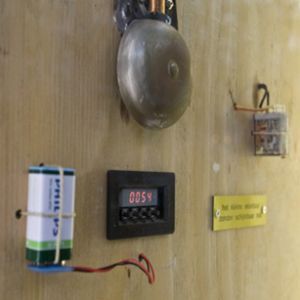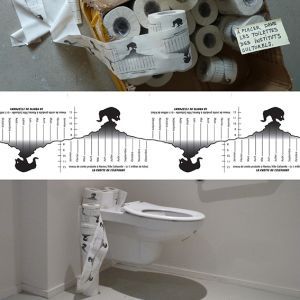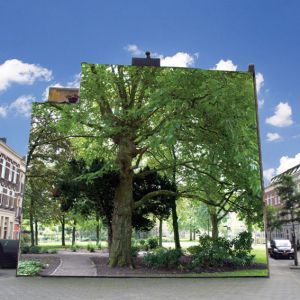Hans Wilschut
Hans Wilschut’s work originates from the urban world. His photographs are lyric reflections on the increasingly built-up surroundings. An underlying social theme can often be found in his photographic work.
Wilschut searches the boundaries between public and private domain at the frayed edges of cities for places where changes merge and manifest. Using a personal approach, he attempts to highlight themes including socio-cultural metamorphoses, the increase in tourism, the shift in world economies and demographic growth in portraits that stand alone. Wilschut translates the language of aesthetics, incorporating it in an underlying layer and challenging viewers to look and sharpen their gaze. His images do not criticize; instead, more than anything they show what only the photographic eye can see. Photo Hans Wilschut
Willem Besselink & Guus Vreeburg (Het Plafond)
Het Plafond is a space for the arts and culture in the apartment of Willem Besselink (visual artist) and Guus Vreeburg (art historian), located at Gedempte Zalmhaven in the centre of Rotterdam / The Netherlands.
Het Plafond exists since the Spring of 1997 – when the apartment building was quite new. It's is a space for artists to do special projects – a program for planned or coincidental visits.
Kuin Heuff
If art can be created by construction, partial demolition and reconstruction, using a carrousel of decisions, Kuin Heuff goes beyond this: she puts the knife in an apparently completed work. Kuin Heuff (Dordrecht, 1969) added a dimension to her painted works by adding air and space in her paintings. Although Heuff is primarily regarded as a painter, the main theme that characterizes her work is another, more philosophical one. It's about creating an image and removing part of the image untill a core remains. A core image in which both sides of that process come together: appear and disappear.
Sander Bokkinga
Sander Bokkinga was born in 1971 in Stokkum (Twente) He was educated as an architect (TU Delft) and works as ‘Artitectus Universalis’: Nonconformist by choice, connected to contemporary society yet always inclined to investigate and push boundaries.
Sander Bokkinga’s work relates directly to this quest of physical and spiritual freedom. Trained as an Architect, his quest for freedom defines the space on the edge of reality and imagination. His work relates to the non-descript desire of citizens to break free from rules and conventions in a tactile and positive manner. His art is an infusion of joy, freedom and interaction.
Studio VOLLAERSZWART
Madje Vollaers and Pascal Zwart started Studio VZ in 1991 as a design studio for interdisciplinary design and visual communication. VOLLAERSZWART explores the interaction between various disciplines such as architecture, sculpture, couture, culture and communication in public space. VOLLAERSZWART has realized various projects in the fields of art and design. It is at the intersection of these disciplines that the ideal situation is created for new visual scenarios to be developed. In the last 20 years VOLLAERSZWART have become established as designers for exhibitions and festivals with their haute sculpture approach to city dressing, exhibition design, public artworks, eye catchers and scenery.
Rolf Engelen
The eclecticism of Rolf Engelen's work makes it difficult to capture in a word. He operates in the public space, in project-based contexts as well as on commission, and he is involved in several collaborative ventures in the domains of social sculpture and language. He was a co-founder of the world's smallest museum, Museum Van Nagsael (1995-2006), and initiator of the 'Second-Chance Plant Company', which has been saving plants dumped on the street since 1997. The act of giving is a cornerstone of his work. In his autonomous work, primarily objects and drawings, Engelen transforms familiar images or visual concepts in such a manner that it is as if we are seeing them anew.
For this edition of Wake up in Art, Rolf Engelen works on a special situation in which he will focus on language. He worked with language before, for example in De Dichtkunstkrant (dode dieren) and for SKOR: DRUK DRUK DRUG (with Jeanne van Heeswijk)
Judith van den Berg
Judith van den Berg collects things of everyday's life. Things she collects are for example eyecontacts, distances between people, hesitations, advances, habits, shoppinglists. Out of her collections she builds stories, or fragments of stories, which are presented in drawings, photographs, animated films and in controlled events in public spaces. Her educations as a psychologist and as an artist seemlessly fit together. In her work as an artist she likes to influence the way we look at our surroundings and behaviour.
Remty Elenga
Remty Elenga (1987) recently graduated from the Willem de Kooning Academy in Rotterdam, were she studied fine arts. In her work she researches the visual language of representation, where and what for we use representation and how this is integrated in our everyday life. Depictions are no longer attached to their physical presence and are free to travel from place to place, finding themselves in both physical and non-physical conditions. Elenga tends to explore these different layers of reality, searching for contradictions within time and space, the visible and the invisible, between what is real and what is not.
Alex Jacobs
V&B (Alex Jacobs and Ellemieke Schoenmaker) is an artist duo founded in 2007 in Los Angeles. In their paintings, sculptures and installations they often comment on the (art)world in a self portraying ironic way. Their work combines historic references with elements borrowed from the media and popular culture. Both impulsive inspiration and a critical interest reveal surprising combinations that invite the viewer to search for commonly missed relations.
V&B have won the Royal painting Prize in 2008 and were recently winners of The New Rembrandt, a dutch television show looking for talent.They have done solo- and group exhibitions at Het Gemeentemuseum in Den Haag, GrimMuseum Berlijn, TENT. Rotterdam, Galerie10 Utrecht, Mark Moore Gallery Los Angeles, ArtAmsterdam, Actionfields Brussel, ArtFair Keulen, ArtAthina Athene, KERS gallery Amsterdam, The Co-Prosperity Sphere Chicago and KNIPSU Bergen.
Wibbine Kien
Educated in the field of Graphic/Industiral Design, Wibbine Kien worked for 14 years as art director in the newspaper business. She started 'Atelier Wibbine Kien' in april 2011. "As an independent artist/organiser I now am able to use my talents in a way even closer to my heart."
While working in the newspaper business, she grew a love for working among-, and with- talented creatives. Connecting people, opening doors and getting things realized, became her fulfilling second nature. A quality which comes in handy being partner in ‘Wake up in It’. A project she started 3 years ago with partner Judith van den Berg.
Half of 'her time’ Wibbine is to be found in her atelier working as an independent artist. Her art-works undeniably carry her signature: with reverting themes as architecture and microbiology, they'll make you think of the work of a monk.
Hester Scheurwater
Hester Scheurwater (1971) studied monumental art at the Royal Academy of Fine Arts in The Hague. Under the guise of self-portraits, she investigates and critiques the role of women as a sex object. Photographs of herself posing before a mirror reflects both Scheurwater's inner thoughts and outward appearance. "The mirrored self-images are my way of reacting on the imitated and fake media images, which are constantly calling upon our imagination, without intending to be taken too seriously, " she explains. " I try to deconstruct this call's effect with my reactions by switching the 'subject-object' relationship, without being victimised by it." Scheurwater's work is well known for its sexual explicitness. Scheurwater also teaches video art at the Royal Academy of Fine Arts in The Hague.
Arianne van der Gaag
Arianne van der Gaag studied at the Art Academy in Utrecht (NL). She moved to Rotterdam and started working as a designer of jewelry, objects and furniture.
Her work has been shown in galleries and musea (like Lilly Zeligman Gallery in Laren and Kunsthal Rotterdam). Also, her works are in the collections of musea (including the Museum of Modern Art in Arnhem), private individuals and collectors. The intersection of art and design is her domain.
Robin Kolleman
Rotterdam based artist Robin Kolleman (Dwingeloo, 1960) graduated in 1988 at the Art-academy of Rotterdam, mixed media and sculpture and won the prize for best student of the year. Her installations, video’s and sculptures were shown in The Netherlands, Belgium, Italy, Spain, Germany, France, Japan and Turkey. Her work is part of several Public and private collections. For fourteen years she collaborates as member of Foundation B.a.d Rotterdam and she participates in projects with Sin è Angelo, a Belgian/Moroccan based art initiative.
In addition to her work as an artist, she also worked as a freelance curator for several spaces. In 2011 she founded her own Foundation ToonZaal.
Daan den Houter
Den Houter brings multiple, contradictory subjects together in the same single work. Resulting into pieces that are in conflict with themselves. Triggering the discussion about their own existence and the viewers opinion. Using humour and cynicism he creates another perspective on the matter of art and on one's own assumptions towards our daily life surroundings.
Floris Visser
Floris Visser (1985). - Tame the dissonant spread of Reason. Create time and space for empirical self-experimentation. Investigate the pluralism of the simple and explore makeshift situations. Construct new sideways for our systems, not as a formalist roadmap to predictable results, but as a situationist derivé instead. Surrender to the uncertainty of the floodplains. Life is a small adventure without apparent use.
Kamiel Verschuren
Kamiel Verschuren is a conceptual interdisciplinary artist, working in a broad international practice with a special interest for the public domain in different positions; as drawer, (spatial) designer, designer of public space, organiser, initiator, social activist, observer, urban advisor, landscape architect, producer and publicist; co-founder of artist initiative foundation B.a.d (1989), Studio Pompstraat, Studio NL 01.08.04 (2004), Stedelinks010 foundation (2011), international project organisation ICUartprojects, member of the advisory board of TENT./CBK Rotterdam (2004), self-management organisation NAC foundation (2004) and board member of Freehouse (2011-2013).
He works individually and in collaboration with other artists and organization. Abroad he is active in several long term collaborations with FSKE-Studio Galeria, S-Air, La Source du Lion and Doual’art; in Budapest (2002-2005), Sapporo (since 2004), Casablanca (2003-2006) and Douala (since 2007).
Monique Benthin
From a distance the art of Monique Benthin appears inviting: for instance, butterfly houses with old photographs in sepia tones, combined with sophisticated fabrics and colourful pigments, or assemblages of soft materials such as lace and fur. From closer up, they confront the viewer with grotesque scenes. At the same time, the bizarre combinations of images make the work comic.
In her images Monique Benthin deliberately seeks out contradictions, something which is a direct result of her past as a ballerina. The competitive bent that she developed there contrasted sharply with life in the 'outside world'. It is in part because of this experience that as an artist she now creates images so full of contrasts.
Jeroen Kuster
Jeroen Kuster (1971) studied at the Art Academy in Enschede (AKI). He has been fascinated by animals all his life. He is especially interested in the way animals are constructed. Over the years he gained knowledge about structures and anatomy of animals, and learned how to (de)construct an animal. By using this knowledge and his extensive fantasy, he designs new organisms.
He uses plastic and other anorganic materials for his organisms. They get Latin names, and are presented like the treasures of a natural history museum. Kuster likes to force us to think about the meaning and significance of the animal world. The natural meets the artificial in the mysterious works of Jeroen Kuster.
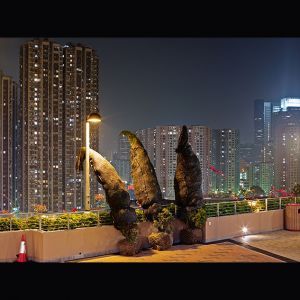
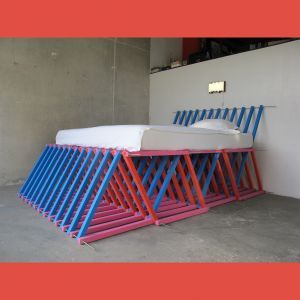
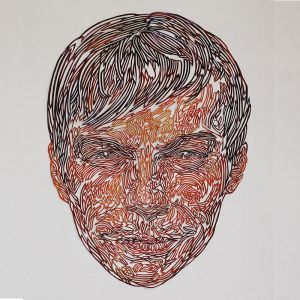
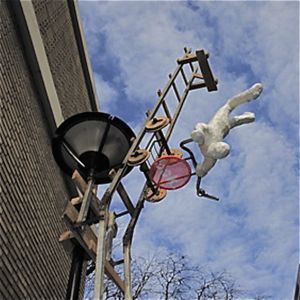
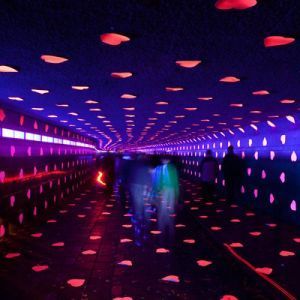
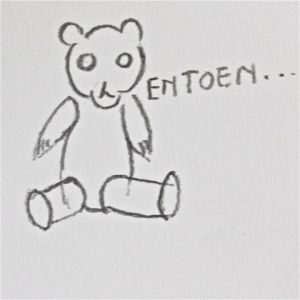
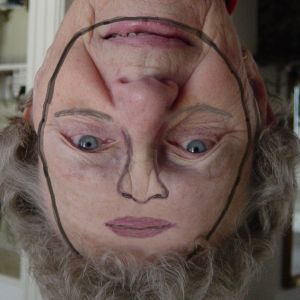
RemtyElenga growingplantsondoors vierkant_thumb_thumb.jpg)
V & B_thumb_thumb.jpg)
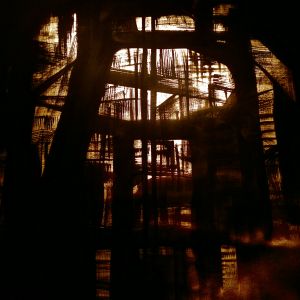
hestervierkanteer_thumb_thumb.jpg)
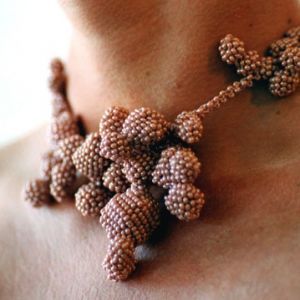
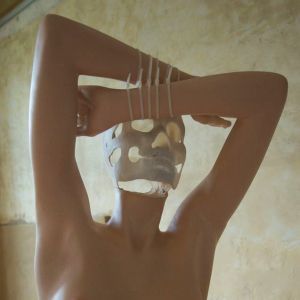
daan den houter vierkant_thumb_thumb.jpg)
